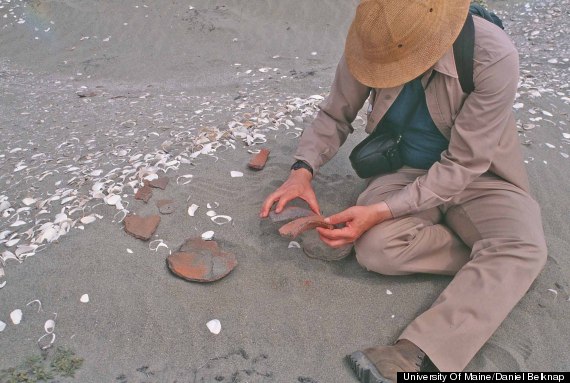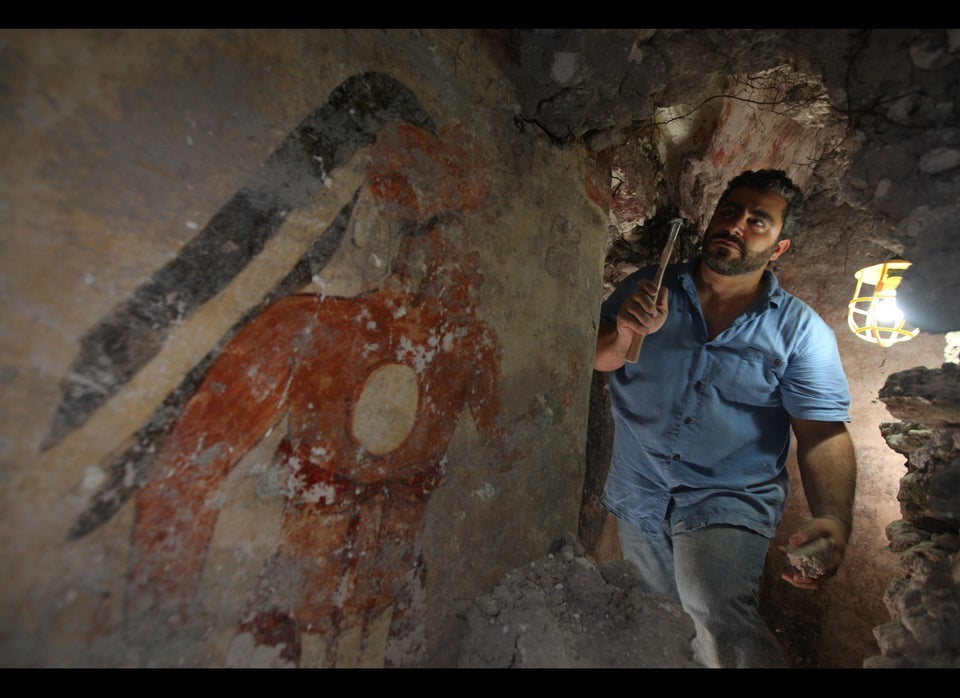
In 1532, Francisco Pizarro led an expedition of battle-hardened Spanish soldiers on a fateful journey, from the desert coast of northern Peru to the highland Inca city of Cajamarca. A civil war had just ended in the Inca Empire, and Pizarro and a party of fewer than 200 men marched eastward to capitalize on the turmoil.
The ensuing Spanish conquest of the Inca had a profound effect on the region’s indigenous people, but a new paper published today in the Proceedings of the National Academy of Sciences reveals that it also had an unexpected impact on the land itself. Before the Spaniards arrived, inhabitants of the arid northern Peruvian coast clad massive sand dune–like ridges with an accidental form of “armor”: millions of discarded mollusk shells, which protected the ridges from erosion for nearly 4700 years and produced a vast corrugated landscape that “is visible from space,” says archaeologist Dan Sandweiss of the University of Maine, Orono, one of the paper’s authors.
 Archaeologist Dan Sandweiss examines pieces of trash that ancient Peruvians discarded on beach ridges in northern Peru.
Archaeologist Dan Sandweiss examines pieces of trash that ancient Peruvians discarded on beach ridges in northern Peru.
This incidental landscape protection came to a swift end, however, after diseases brought by Spanish colonists decimated the local population and after colonial officials resettled the survivors inland. “There were very few [indigenous] people living along the coast then,” says lead author and geologist Daniel Belknap of the University of Maine, and without humans to create the protective covering, newly formed beach ridges simply eroded and vanished.
Belknap and Sandweiss began examining the surviving ridges in 1997, selecting a set of nine that extend 21 kilometers in length northwest of the mouth of the Chira River. A previous researcher, archaeologist James Richardson III of the Carnegie Museum of Natural History in Pittsburgh, Pennsylvania, had noted an abundance of shells, pottery sherds, and fire pits covering these beach ridges, so the University of Maine researchers decided to study the sand formations and their origins.
With a team of students, the two researchers dug test pits into the sides of the dunes, the tallest of which rises 7 meters in height. In the upper layers, team members found a dense concentration of shells, most of which belonged to two mollusk species favored by Peruvian diners today. Taken together, the cultural evidence strongly suggested that ancient Peruvian fishers had camped on the ridges, possibly year-round, eating shellfish meat and tossing away millions of shells.
By mapping and examining the ridges themselves, the team determined that they formed under a specific combination of events. When earthquakes periodically struck the region, they loosened sandy sediments throughout the Chira valley, and during El Niño events, these sediments were swept into the Chira River and transported to the inlet. There, shore currents carried the sand to the northwest and deposited the sediments in long dunelike ridges along the coast. Because little rain fell in the region annually, there was little vegetation to stabilize these ridges and protect them from strong winds that regularly gust there.
“If you are there at 2 in the afternoon, you get these 40-kilometer winds blowing there, and your eyeglasses are scoured,” Richardson says.
But the ancient humans who camped on the ridges unwittingly preserved these landforms, Sandweiss says. They discarded the shells from their dinners on the slopes, and their trash armored the ridges against the scouring action of the wind, preserving even the sharp crests. “You don’t think that pre-Columbian people can have such a significant effect on the landscape, but clearly they can,” he says.
Previously published radiocarbon dates for charcoal from the ancient fire pits showed that the oldest ridge dated to about 5100 years ago and the most recent was created about 400 years ago, about the time of the Spanish conquest. Other ridges appear to have formed after that time, but they were swept away by the wind. “The last 500 meters of the coast is low and hummocky, not like the discrete ridges before,” Belknap says.
Archaeologist Richard Burger of Yale University says the findings fit well with ideas that other researchers have raised about the unintentional environmental effects that the Spaniards had on the former Inca Empire. The European conquerors, he notes, had a huge appetite for wood for construction and for smelting operations, and some archaeologists have suggested that this led to the deforestation of the hillsides around Cuzco. “The landscape is sensitive to changes in cultural patterning, and very often the changes that occur are not intended and not even intuitively sought-after,” he says.
The study is an important reminder “of the very blurry divide between the natural world and the cultural world,” adds archaeologist Torben Rick of the Smithsonian Institution’s National Museum of Natural History in Washington, D.C. Parts of the northern coast of Peru may look completely natural and pristine, he says, “but if you rewind the clock a couple of millennia, you see that people were actively shaping this land by creating beach ridge systems.”
Original article:
